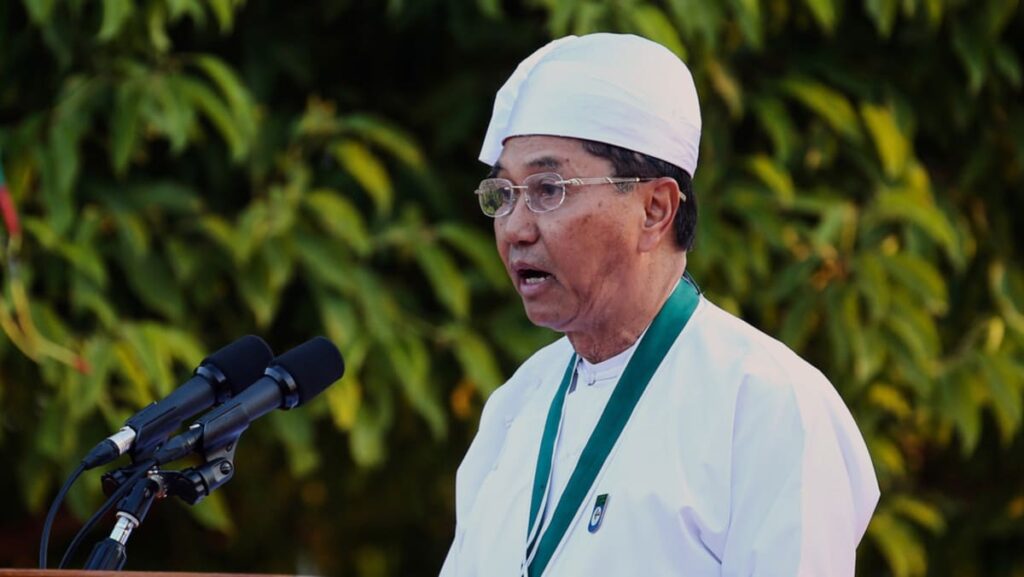SYMBOLIC LINK OF CONSTITUTIONAL LEGITIMACY
Born in Myanmar’s second-largest city of Mandalay in July 1951, Myint Swe came of age during Burma’s socialist years and chose the military as a career. With a Mon ethnic background, he joined the Defence Service Academy (DSA) after high school, graduating in 1973 from the DSA’s 15th intake; Min Aung Hlaing was in the 19th intake.
In 1997, Myint Swe was promoted to the rank of colonel and given command of the 11th Light Infantry Division. His military career took off in the 2000s: in 2001, as a brigadier general, he became commander of the South-East Regional Military Command following a helicopter crash that killed his predecessor. In 2002, he rose to major general and commander of Yangon Regional Military Command.
Myint Swe’s rise occurred during the years of the State Peace and Development Council (SPDC) military regime, which held power in Myanmar for over two decades from 1988. The SPDC pushed through the controversial 2008 Constitution as the basis for its orchestrated political transition. The USDP and NLD administrations continued under this military-drafted constitution, which provided a limited legal basis upon which to push for freedoms such as that of expression and certain citizen rights.
Myint Swe’s vice-president position under the 2008 Constitution as the military’s nominee could be considered constitutionally legitimate. Following the 2021 coup, he arguably lent this legitimacy to the SAC as its acting president.
Now, his death has severed the symbolic link to that facade of constitutional legitimacy, leaving only the speaker of the Lower House, U T Khun Myat, as an institutional holdover from the NLD years. The other vice president for the NLD administration, U Henry Van Thio, had resigned in 2024.
Read the full article here
